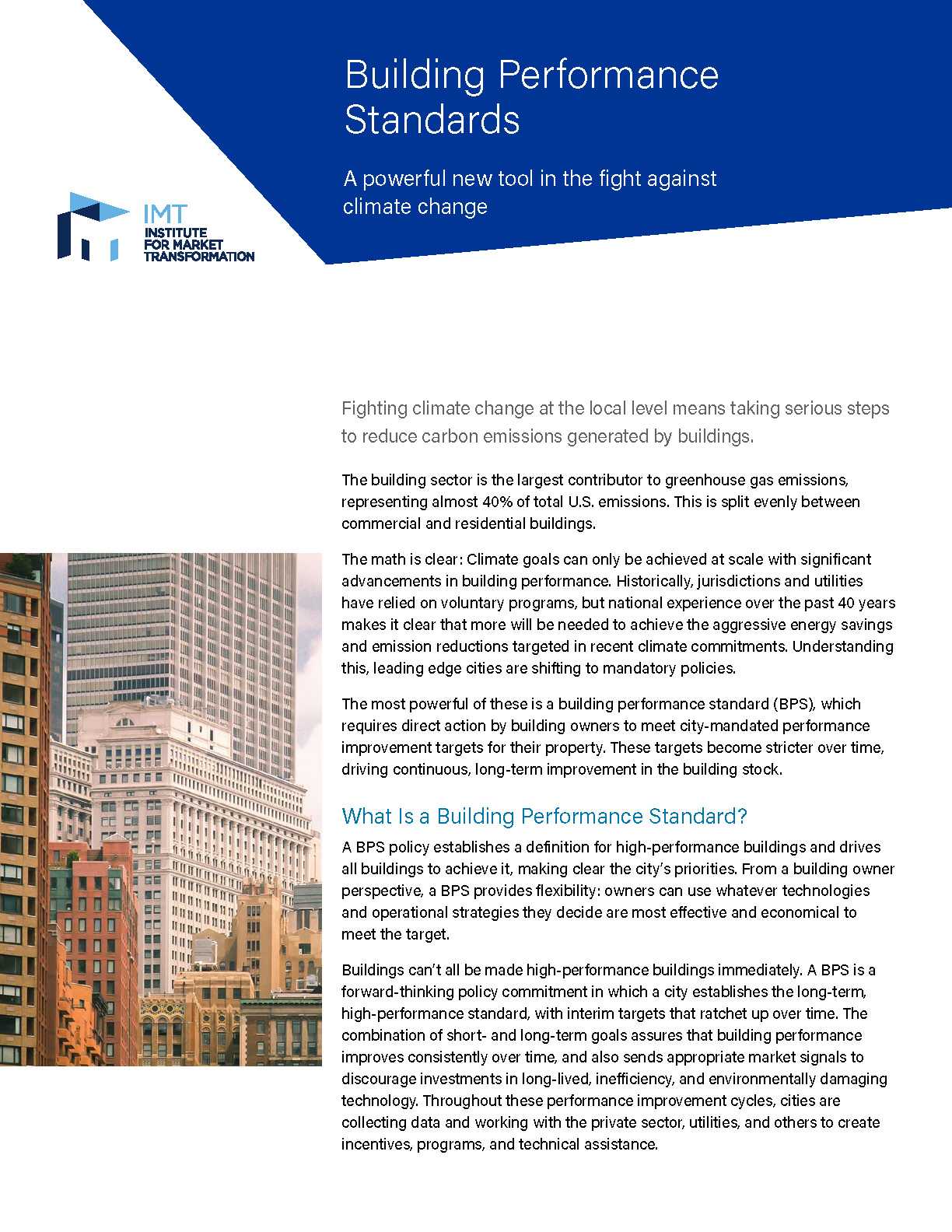
As fighting climate change takes on increasing urgency, fanned most recently by wildfires in California, building performance standards (BPS) are garnering increasing attention around the U.S. Washington, DC adopted the first BPS in January followed closely by New York City and Washington State. IMT pioneered the concept and is now working with over a dozen jurisdictions that are considering BPS, including Boston and Saint Louis.
So, what is a building performance standard?
IMT recently released a two-page fact sheet to start this discussion, but let’s break it down here. A BPS policy can include multiple standards, each targeted to increase performance for a different aspect of a building. These can include energy, gas and water use, as well as emissions and peak energy demand. These targets become stricter over time, driving continuous, long-term improvement in the building stock. BPS complements building energy codes; the two strategies work in tandem to improve building performance. BPS apply to a broad swath of buildings even when they are not pulling permits. From a building owner perspective, BPS provides flexibility, as owners can use whatever technologies and operational strategies they decide are most effective and economical to meet the target.
Why does a BPS matter in the fight against climate change?
In most U.S. cities, buildings account for the majority of greenhouse gas emissions. Cities cannot meet ambitious climate commitments without improving the performance of public and private buildings. Jurisdictions are looking to BPS because they are the most powerful and direct tool for driving improved performance in existing buildings and garnering attendant benefits for jobs, economic growth, achieving increased renewable energy share, and energy cost reductions. And, BPS are the most effective tool available to cities for fighting climate change.
- Based on a report it commissioned, Washington, DC estimates that its Building Energy Performance Standard will reduce energy use in buildings by over 20%, thereby reducing carbon dioxide emissions by over one million tons annually.
- New York City projects that its standard, the Carbon Mobilization Act, will cut six million tons of carbon dioxide annually by 2030, prevent 43 premature deaths and 107 emergency room visits every year, and create at least 26,700 green jobs.
- Washington State projects that its 2019 legislative package anchored by its BPS, the Clean Buildings Act, will reduce annual carbon dioxide emissions by 14 million tons by 2035.
“Jurisdictions are looking to BPS because they are the most powerful and direct tool for driving improved performance in existing buildings…”
Interested in learning more?
Whether you’re a city leader interested in exploring how a BPS might benefit your jurisdiction, a climate advocate interested in these policies, or a building owner or tenant wanting to better understand how these developing standards affect your properties, IMT is your go-to resource. Send us a note at imtweb@imt.org to connect one-on-one.


